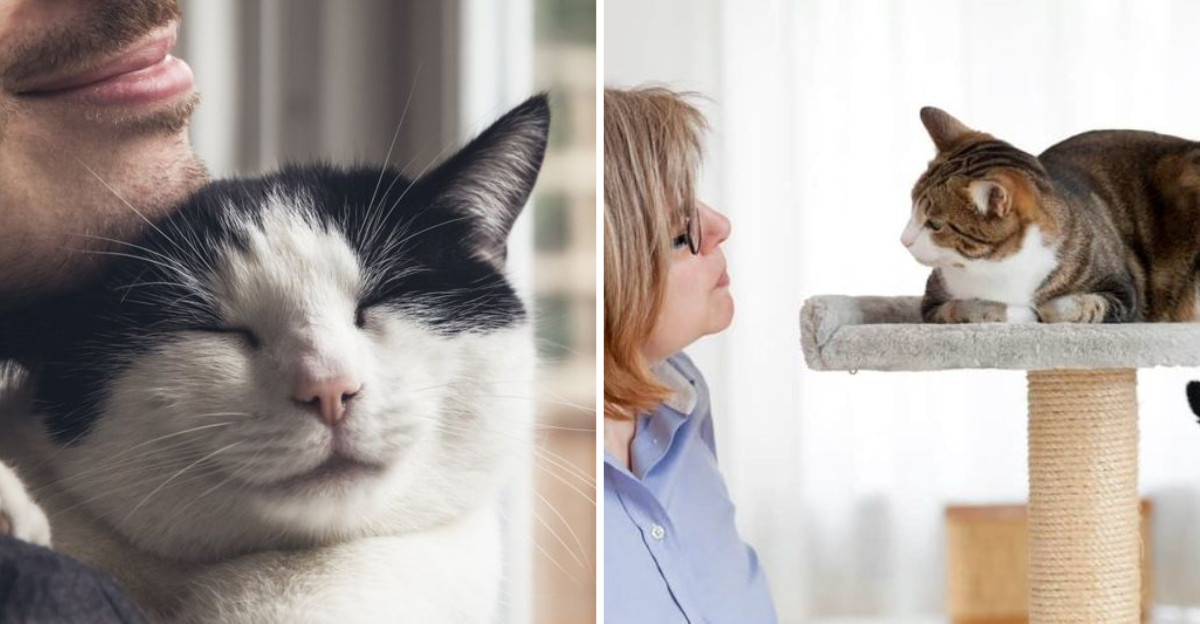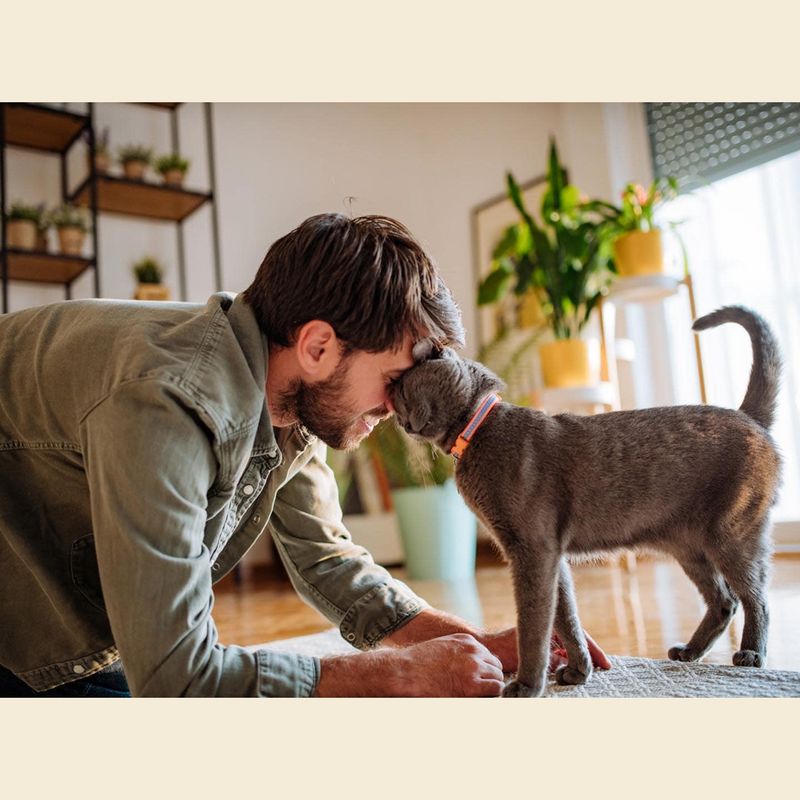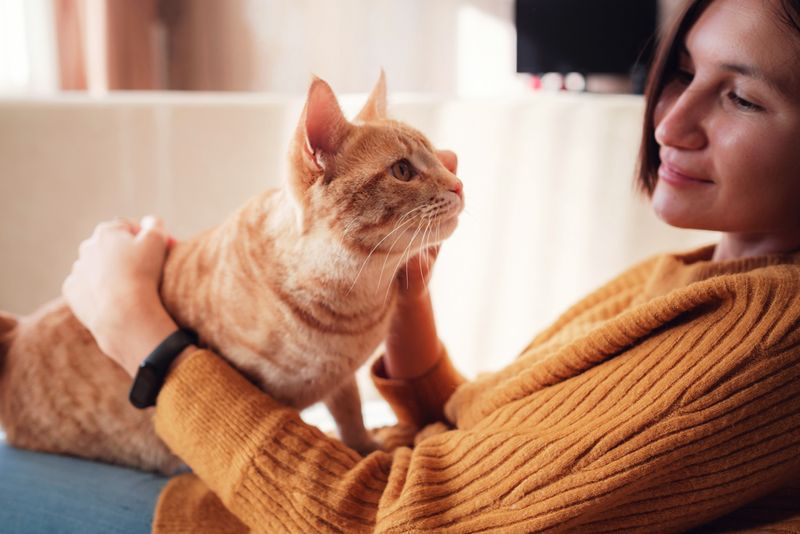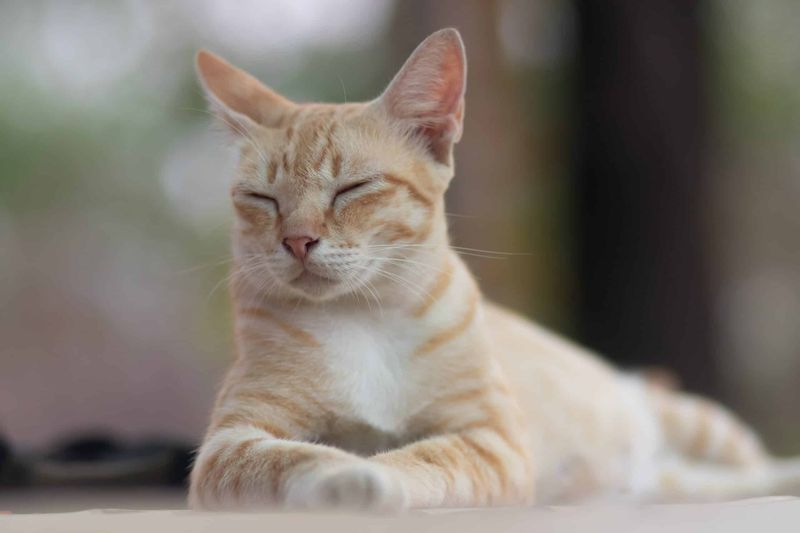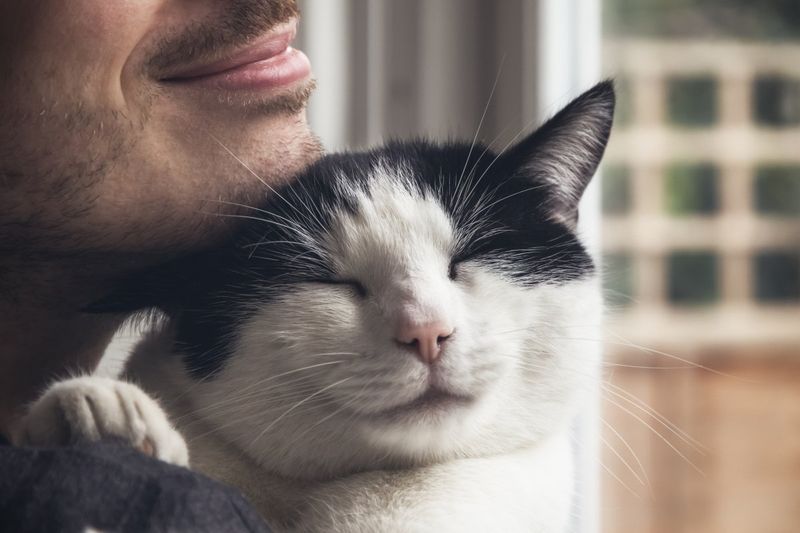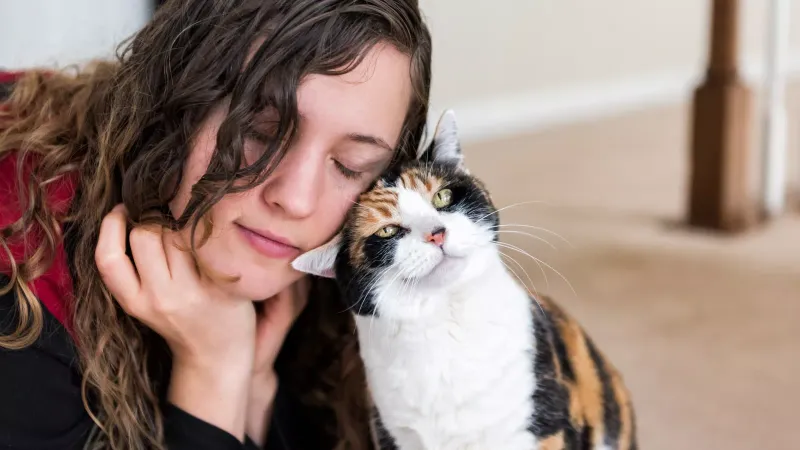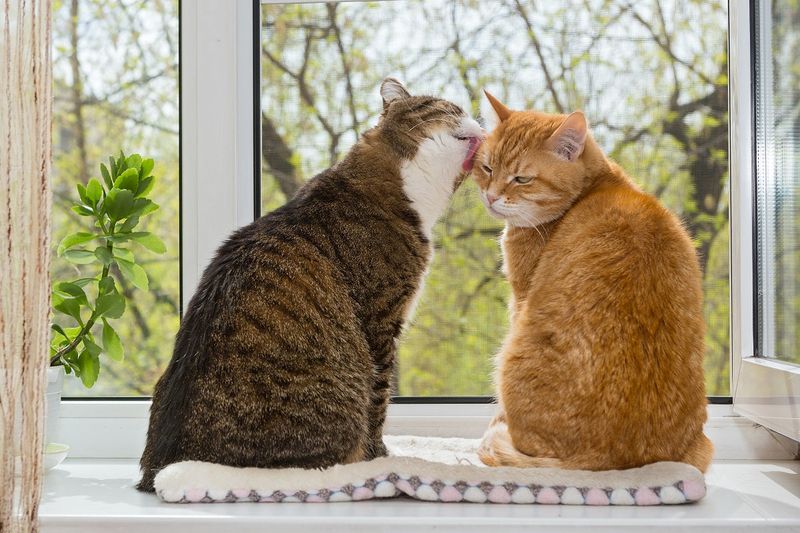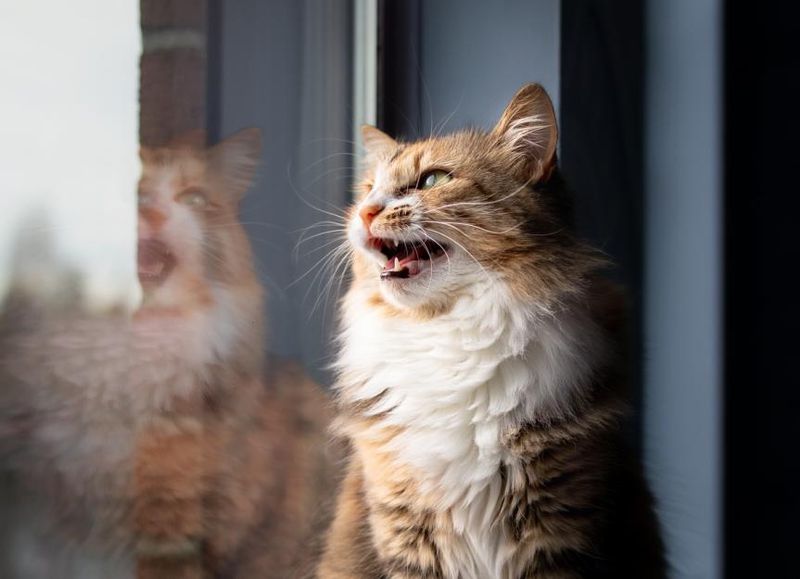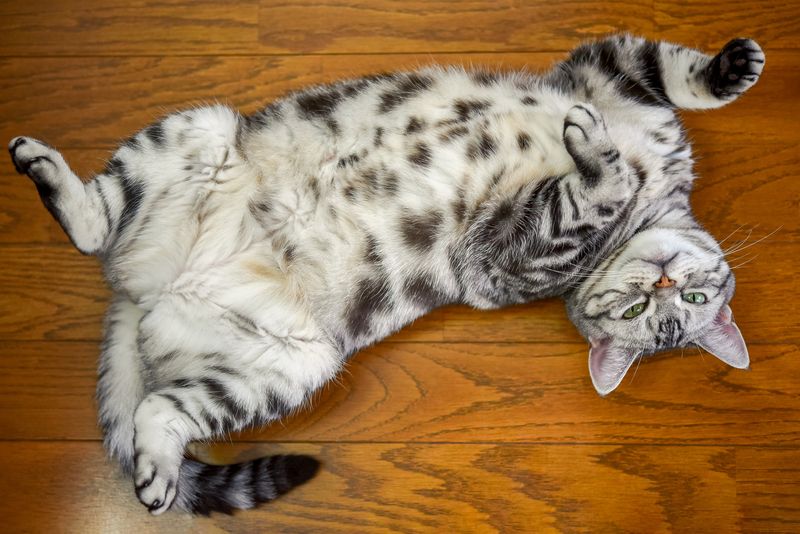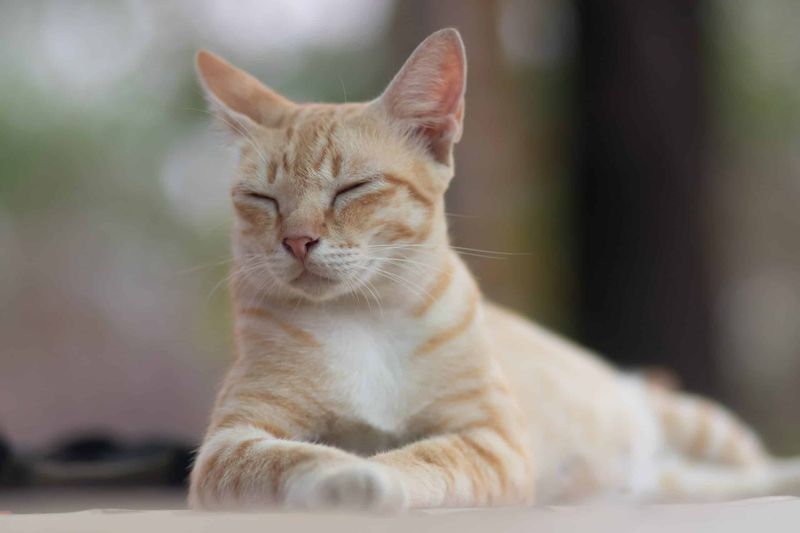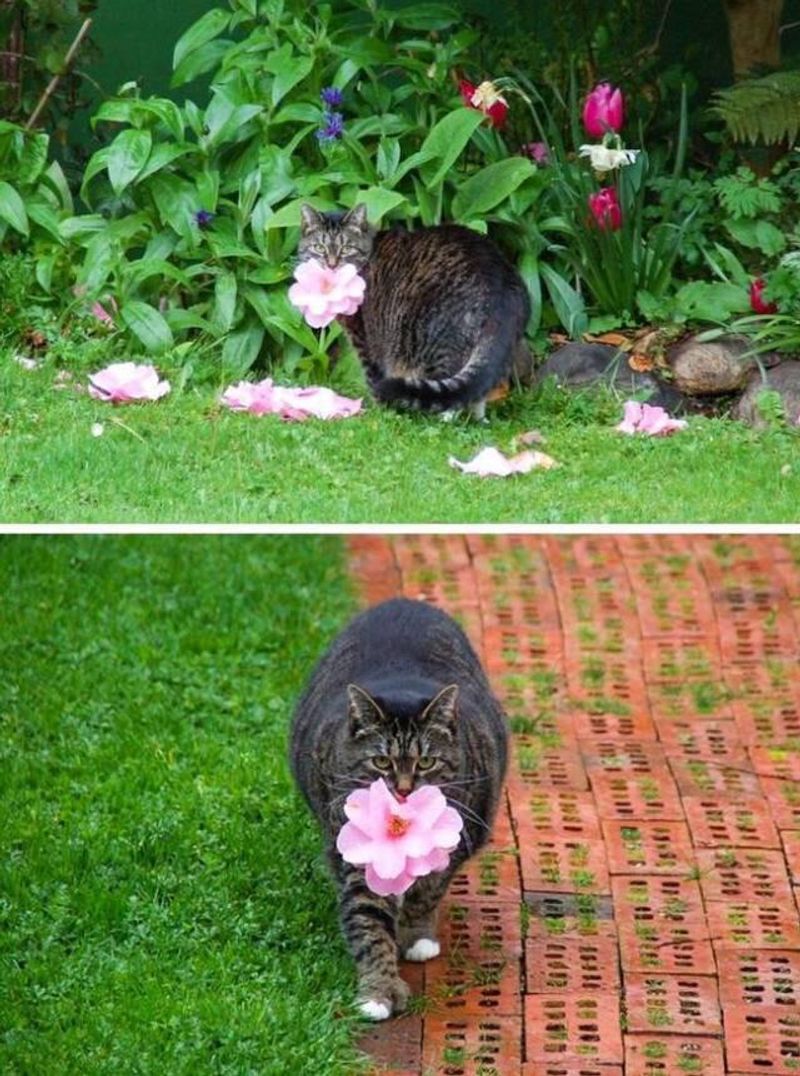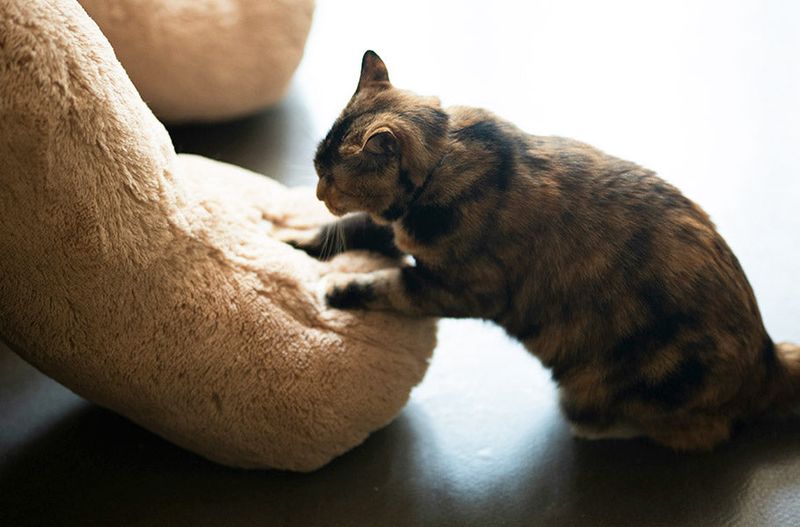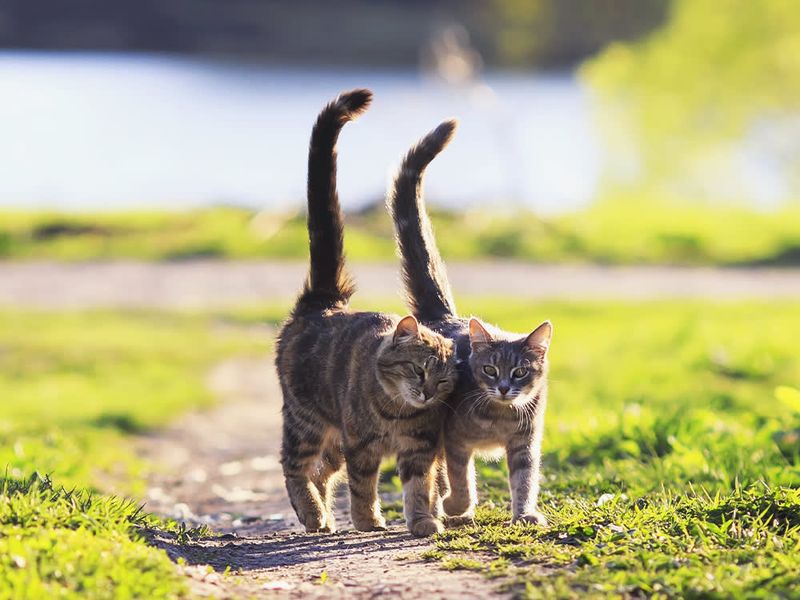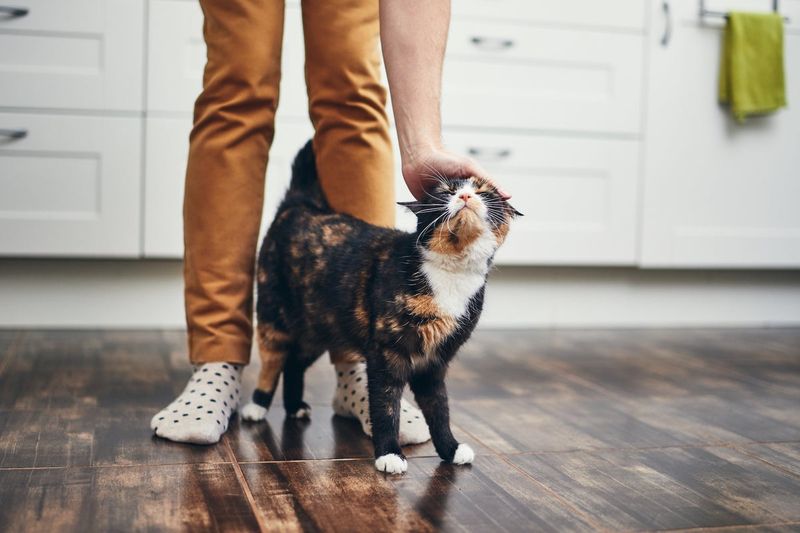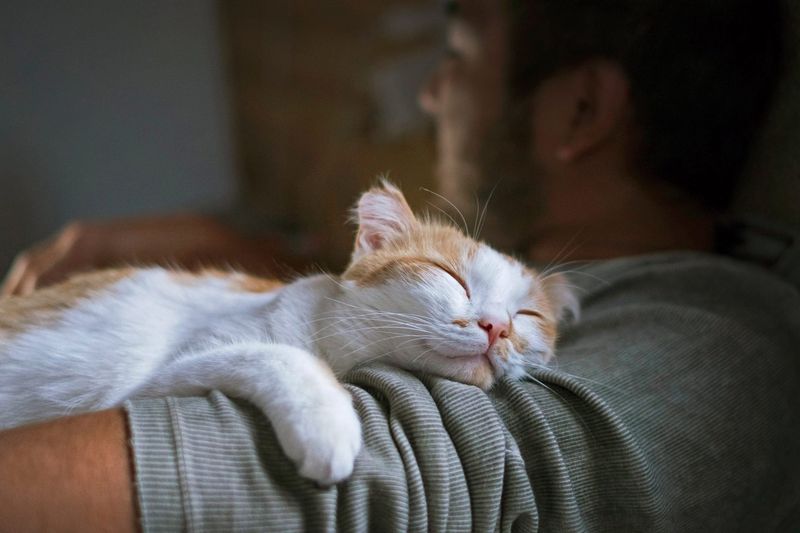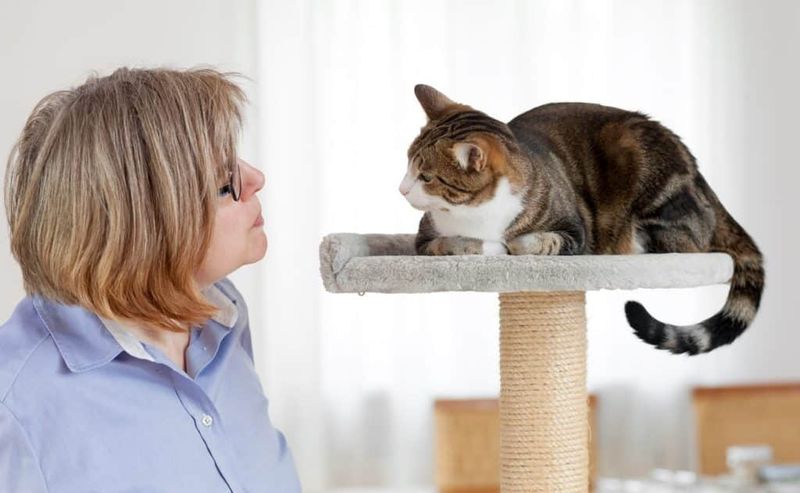📖 Table of Content:
- 1. Selective Affection
- 2. Non-Intrusive Companionship
- 3. Subtle Communication
- 4. Respect for Personal Space
- 5. Pheromone Marking
- 6. Grooming Behavior
- 7. Vocalizations
- 8. Offering Their Belly
- 9. Slow Blinking
- 10. Bringing “Gifts”
- 11. Kneading
- 12. Tail Position
- 13. Following Their Owners
- 14. Sleeping on or Near Their Owners
- 15. Recognizing Their Name
Cats and dogs each form unique and profound bonds with their human companions, but their methods of attachment often differ. While dogs are known for their overt loyalty and pack-oriented behavior, cats exhibit a more subtle and independent form of affection. Here are several ways cats create lasting bonds that are distinct from those of dogs:
1. Selective Affection
Cats are known for their selective affection, often choosing specific individuals to bond with deeply. This selectivity makes their displays of love particularly meaningful and cherished. Unlike dogs, who may show affection more broadly, a cat’s choice to bond with someone can feel like a unique honor. When a cat chooses you, it signifies a special connection that isn’t easily replicated. This selective bonding creates a strong emotional tie, as it feels rewarding to earn a cat’s trust and love. Cats’ discerning nature often results in profound, personalized relationships with their chosen humans.
2. Non-Intrusive Companionship
Cats offer a unique form of companionship that is non-intrusive and calming. They can be content simply being near their owners without the need for continuous interaction. This peaceful coexistence allows for a comforting presence that doesn’t demand attention. Unlike dogs, who often seek constant engagement, cats respect personal space while still offering an emotional connection. Their quiet companionship can be the perfect antidote to a stressful day, allowing humans to enjoy their presence without feeling overwhelmed. This subtle way of bonding makes cats special in their own right.
3. Subtle Communication
Cats are masters of subtle communication, using body language and vocalizations to express their feelings. One of the most endearing gestures is the slow blink, often referred to as a “kitty kiss.” This gentle blink signifies trust and affection, and when returned, it strengthens the bond between cat and owner. Unlike dogs, whose communication is often more direct, cats rely on these nuanced signals to convey their emotions. Understanding and responding to these cues requires attentiveness, but it results in a deeply rewarding relationship built on mutual respect and understanding.
4. Respect for Personal Space
Cats are known for their respect for personal space, often preferring to initiate interactions on their own terms. This independence allows them to maintain a sense of autonomy while still forming strong bonds with their owners. Unlike dogs, who may seek constant closeness, cats value their space and allow their humans to do the same. This mutual respect fosters a healthy relationship where both parties feel comfortable and secure. By giving and respecting space, cats create a bond based on understanding and trust, making their companionship uniquely fulfilling.
5. Pheromone Marking
When cats rub their face or body against their owners, they are engaging in pheromone marking, a behavior that signifies ownership and affection. This act of marking creates a comforting and familiar environment, enriching the bond between cat and human. Dogs, on the other hand, typically use marking for territory. Cats use it to reinforce their attachment to their favorite people, making the bond feel exclusive and special. This behavior not only strengthens the emotional connection but also provides a sense of belonging and security for both cat and owner.
6. Grooming Behavior
Cats often groom themselves or even their humans as a sign of trust and comfort. This grooming behavior indicates that they feel safe and content in their owner’s presence. Unlike dogs, who may prefer physical play, cats express their affection through these quiet, intimate gestures. Grooming is a bonding activity that reinforces the connection between cat and human, providing a sense of calm and mutual trust. This act not only shows that the cat is at ease but also that it sees its owner as part of its family, creating a lasting bond.
7. Vocalizations
Cats have a unique way of using vocalizations to communicate affection and excitement. Sounds like chirps and trills are often reserved for those they feel closest to, creating a special language between cat and owner. These unique noises are not just random sounds; they carry meaning and emotions that deepen the bond. Unlike dogs, whose vocal expressions are more straightforward, cats’ vocalizations require a deeper understanding of their personality and mood. This personalized communication creates a rich, intimate connection that is both rewarding and fulfilling for cat lovers.
8. Offering Their Belly
When a cat exposes its belly, it is a sign of trust and vulnerability. This gesture, while not necessarily an invitation for a belly rub, shows that the cat feels secure with its owner. Unlike dogs, who may freely offer their belly for petting, cats reserve this position for those they truly trust. It signifies a level of comfort and confidence in the relationship. Owners who recognize and appreciate this gesture are rewarded with a deeper understanding and connection with their feline companions. This act of trust is a testament to the strong bond they share.
9. Slow Blinking
Slow blinking is a subtle yet powerful way cats communicate trust and affection. When a cat gives a slow blink, it is akin to a smile or a nod, a sign that they feel safe and content. Returning the gesture by slowly blinking back reassures the cat that you’re friendly and safe, reinforcing the bond. Unlike dogs, who use wagging tails and enthusiastic greetings, cats’ expressions of love are more understated. This quiet form of communication requires patience and attentiveness but leads to a rewarding relationship filled with mutual respect and understanding.
10. Bringing “Gifts”
Cats may bring their human companions “gifts,” such as prey or toys, as a way of showing affection and contributing to the group’s well-being. This behavior stems from their natural hunting instincts and signifies trust and bonding. Unlike dogs, who may bring objects to initiate play, cats’ offerings are often more symbolic. These “gifts” are a sign of friendship and care, reflecting the cat’s desire to share its world with its owner. Recognizing and appreciating these gestures enhances the bond, creating a sense of partnership and mutual respect.
11. Kneading
Kneading is a comforting behavior in cats, originating from kittenhood when they stimulated milk flow from their mother’s mammary glands. This action signifies comfort and affection, often performed in the presence of trusted humans. Unlike dogs, who may express affection through licking or wagging tails, cats use kneading as a gentle reminder of their bond with their owner. The rhythmic motion is soothing and reinforces the connection between cat and human. Sharing this tender moment of relaxation and trust builds a lasting bond, strengthening the emotional ties between them.
12. Tail Position
A cat’s tail is a barometer of its emotional state, and an upright tail is a clear sign of affection. This confident posture indicates contentment and a willingness to engage. Unlike dogs, whose tails may wag energetically, cats’ tails convey subtle messages. A relaxed, gently swaying tail shows contentment, while a straight-up tail means they’re happy to see you. Observing and understanding these signals helps strengthen the bond, as it reveals what makes the cat feel comfortable and loved. This nuanced communication creates a rich connection unique to cat-human relationships.
13. Following Their Owners
Cats may follow their owners from room to room, indicating a desire to be near them and a form of companionship. This behavior, while sometimes overlooked, signifies a strong bond and attachment. Unlike dogs, who may follow for play or food, cats’ following is often a quiet demonstration of their affection and interest. This subtle form of companionship allows cats to be part of their owner’s lives without being intrusive. Recognizing and appreciating this behavior fosters a deeper connection, making the relationship more meaningful and rewarding for both cat and human.
14. Sleeping on or Near Their Owners
Cats often choose to sleep on or near their human companions, seeking warmth and comfort, and reinforcing their bond. This behavior is a testament to the trust and security they feel with their owner. Unlike dogs, who may seek closeness for protection, cats sleep near their owners as a sign of affection and companionship. This proximity during rest times creates a soothing environment, enhancing the emotional connection. Sharing these peaceful moments solidifies the bond between cat and owner, making their relationship uniquely intimate and fulfilling.
15. Recognizing Their Name
Studies have shown that cats can recognize their names and differentiate them from other sounds, indicating a level of attachment and responsiveness to their human companions. This recognition is a significant indicator of the bond between cat and owner, showing that the cat acknowledges and appreciates its human’s attention. Unlike dogs, who may respond to almost any call, cats’ selective recognition makes the bond feel special. This ability to identify their name enhances communication and reinforces the emotional connection, creating a more meaningful and interactive relationship.
